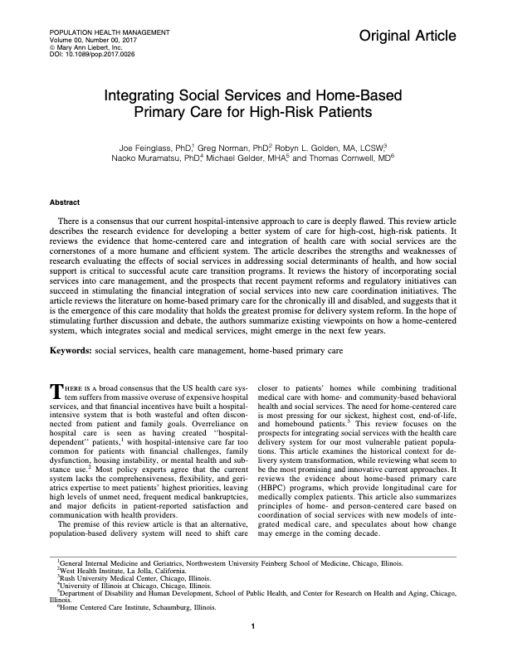Integrating Social Services and Home-Based Primary Care for High-Risk Patients
The review discusses the integration of social services and home-based primary care (HBPC) for high-risk patients, highlighting the flaws in the current hospital-intensive care model. It advocates for a system that combines medical care with social services, providing a more comprehensive and humane approach. The review explores the benefits of such a model, emphasizing the importance of care transition programs that effectively address patients’ social needs to reduce hospital readmissions and emergency department visits.
The authors analyze the research evidence for integrating social services into healthcare, particularly for patients with functional limitations or complex health profiles. They discuss the role of recent payment reforms and regulatory initiatives in promoting the integration of social services into new care coordination programs. The review also examines the potential for HBPC programs to reform the delivery system, offering comprehensive care for medically complex patients.
Additionally, the review highlights the advantages of HBPC over traditional office-based care, including better coordination of medical and social support services, and direct assessments of patients’ home environments. The review outlines the attributes of successful integrated care programs, emphasizing the potential for growth in home-centered care systems that combine social services and healthcare for high-risk, high-cost patients.

